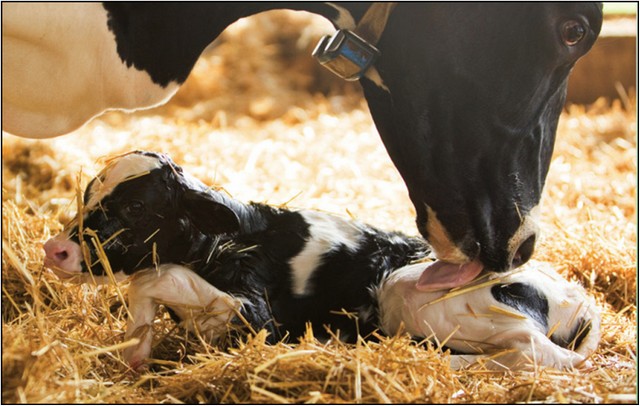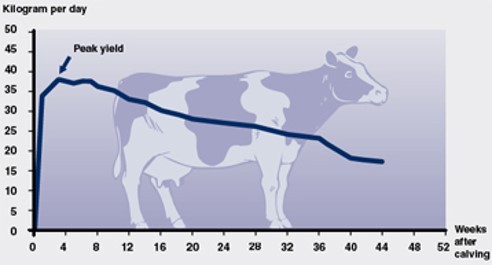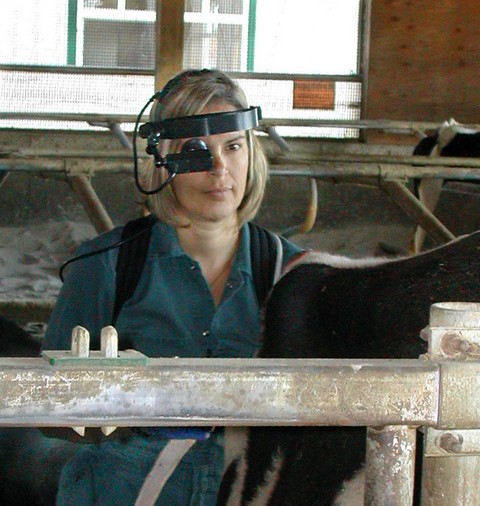
Reproduction literally is what makes the dairy industry possible. For a dairy cow to produce milk she must have a calf, and to keep her in the herd she must continue to have a calf each year. Seems like a pretty simple concept, however farms still struggle with reproduction. A farms Pregnancy Rate, expressed as the number of cows confirmed pregnant divided by the number of cows eligible to be bred in a 21-day period, is the best way to assess its reproductive performance. It enables us to monitor the efficiency by which cows get inseminated and are confirmed pregnant.
All too often, dairy producers still use the percent of cows pregnant at herd health to evaluate how well their herd is doing reproductively, however monitoring reproduction that way only tells part of the story. This calculation only looks at the cows the farm actually bred, which is a calculation of Conception Rate. A herd could have a 50 percent Conception Rate, but if they only breed 30 percent of the cows eligible to be bred, then their overall Pregnancy Rate is 15 percent, and therefore not maximizing the herds reproductive efficiency.
In 2015, Dr. Paul Fricke introduced 5 keys of a successful breeding program to help farms achieve a 30 percent Pregnancy Rate.
- Key 1 & 2: Breed cows quickly after the end of voluntary waiting period and at the correct time in relation to ovulation
- Key 3: Improve AI efficiency: Who is breeding the cows and technique
- Key 4 & 5: Identify nonpregnant cows early after breeding and get them rebred efficiently

Since then, progressive farms have flown right passed 30 percent and consistently run a 35-40 percent Pregnancy Rate all year round. However, despite some farms success, the average Pregnancy Rate for North American dairy farms remain between 14-20 percent,depending on the region and size of the farm.
A common misconception working with farms to improve their reproductive performance is that to achieve high Pregnancy Rates a farm must use synchronization programs and hormones. With todays technology and herd management, that is no longer the case. Innovative tools, like Activity monitors with Rumination, Herd Navigator, and Dairy Comp Herd Management software programs, allow us to manage our breeding programs without a lot of hormones. Progressive farms recognize that maintaining the health of the herd throughout lactation plays a major role in reproductive performance. Inflammatory disease postpartum and mastitis just before and during the breeding period significantly impairs a cow’s ability to get pregnant and even maintain that pregnancy. Improvement in cow comfort, reduction in lameness, and increase milk quality, has translated into a reduction of days to first breeding, increased conception rate, and lower pregnancy loss.
The goal to maximize farm profitability through reproduction is simple: breed all cows so that they maximize the area under the lactation curve. A high pregnancy rate with an appropriate voluntary waiting period is key. There is often a debate whether profitability is achieved by having short lactations and lots of them, or long lactations and minimize the transitions. Perhaps the answer lies somewhere in between and varies from one farm to another and even within farms. As farms get more efficient and utilize genomics, cows are peaking higher and maintaining that production further out into the lactation. With the introduction of robots into the dairy industry, cows no longer are restricted to the number of times they are milked per day. Robots allow cows to become individuals within a herd and are free to express their true potential more easily. This changes the lactation curve which can allow us to maintain cows in a profitable state longer without having to go through the most vulnerable time for a cow, giving birth.

Finally, successful farms know their reproductive goals and have a game plan for achieving those goals. They have tools in place to allow them to monitor their progress and adjust quickly when things go sideways. As well, all the key players on the farm, from the veterinarian to the nutritionist to the employees, know the herd goals and work together as a team to reach the desired outcome.
Once your farm has mastered the basics of reproductive success and profitability, you can move on to more advanced reproductive opportunities available to dairy farmers today. Part 2, in the next issue, will look at using innovative technology, such as genomics, sexed semen, embryo transfer and IVF to maximize farm profitability and some of the economics behind these tools.
Written by Dr. Lisa Hemphill
